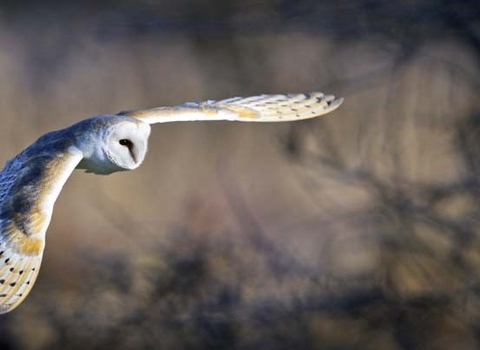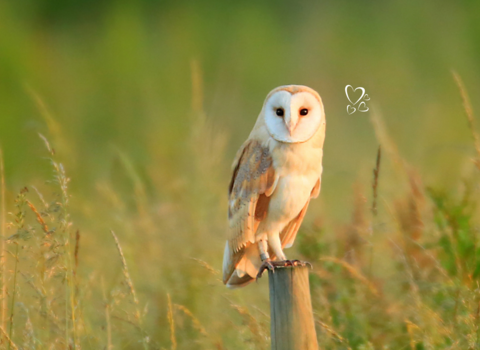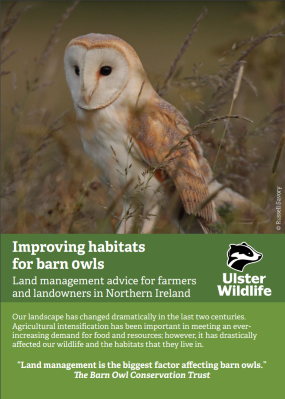Why do barn owls need protecting?
With its heart-shaped face and ghostly-white appearance, the barn owl is one of our most distinctive and well-loved countryside birds. If you’ve been lucky enough to see one, it’s a sight you’ll never forget.
Unfortunately, the future of this iconic creature is in peril, with fewer than 30 breeding pairs estimated to be left in Northern Ireland. Loss of suitable foraging and nesting habitat, extreme weather conditions, combined with the build-up of toxins from consuming poisoned prey have all taken their toll. Without urgent help, barns owls could be lost forever.
How is Ulster Wildlife helping?
We have been working for over 10 years to help barn owls thrive in Northern Ireland, with help from passionate volunteers and landowners who are at the forefront of efforts to save this species. We monitor barn owl populations and distribution through an annual survey, supply nest boxes for barn owls to roost and breed in suitable areas, provide advice to landowners on managing land for barn owls, and record and map public sightings and signs of barn owl occupation, so we can target our conservation efforts.
This vital work is made possible thanks to funding from the Northern Ireland Environment Agency and the Garfield Weston Foundation alongside donations from our members and supporters.
How can I help barn owls?
It's great that you want to help barn owls. Find out about the different ways that you can get involved and make a difference below.
Report a nest site
If you're fortunate to have a barn owl nesting on your property or know of a nest site in your area, we would really welcome some more information about it, to help us help these endangered birds.
Locating nest sites is very important for barn owl conservation. This will enable us to work in partnership with landowners to protect breeding sites, monitor chicks, provide help and advice, and promote good practice for managing land for barn owls.
If you have identified a potential nest site (see our FAQ's below) please contact Katy Bell, Senior Conservation Officer, in confidence, on 07816 065736 or katy.bell@ulsterwildlife.org/barnowls@ulsterwildlife.org. All information will be treated sensitively.
Manage your land for barn owls
Our landscape has changed dramatically in the last two centuries. Agricultural intensification has been important in meeting an ever-increasing demand for food and resources; however, it has drastically affected our wildlife and the habitats that they live in. According to The Barn Owl Conservation Trust, 'land management is the biggest factor affecting barn owls.'
We have created a guidance document entitled ‘Improving habitat for barn owls’ which provides details on what barn owls need to survive in the Northern Irish countryside. This advice is to enable landowners and farmers to take action to provide foraging habitat and nesting provisions for this important species.
Summary of actions landowners can take:
· Maintain wooded areas and woodland edges for wood mice and other small mammals.
· Maintain, create, and enhance hedgerows through native planting and trimming regimes.
· Provide 2-6m field margins that are grazed lightly or rotationally cut every other year.
· Plant wild bird cover or pollinator margins.
· Retain winter stubbles throughout the winter months.
· Retain large mature trees for natural nesting cavities and perch points.
· Retain old stone buildings.
· Put up nest boxes if suitable (indoor or outdoor).
· Stop rodenticide use or follow the guidance for the safe use of rodenticides.
· Look out for barn owls and report them to barnowls@ulsterwildlife.org or submit your sightings via our online recording form.
Avoid using rat poison (rodenticides)
An often overlooked step, particularly in a busy, productive farmyard, is to stop using or minimise the use of rodenticide. Rat poisons enter the food chain and build up in top predators like barn owls. Follow the Campaign for Responsible Rodenticide Use code if you must use rodenticide.
Provide a home for barn owls
Barn owls need places to roost and nest and a well designed and properly sited nest box is a perfect option only if you have suitable barn owl habitat - see above. You can build and put up a nest box either indoors in an open shed or outbuilding, or outdoors on a tree.
Nest boxes can be erected at any time of year, as long as there is no risk of disturbance to barn owls, however we recommend it is done during the winter months - please follow the guidance from the Barn Owl Trust provided in the links above.
It is a good idea to check the inside and general condition of a nest box every year. The check should take place after any chicks have dispersed and before a barn owl pair begins their courtship for the next breeding season, i.e. between beginning-October and January.
Please note: We erect barn owl boxes during the winter months. If you think you have habitat to support barn owls then please register your interest and we will be in touch.
Report a sighting
Sightings of barn owls (dead or alive) are vital in helping us to track down and protect these elusive birds.
Barn owls can be spotted at any time of the year and in almost any area/habitat but the most useful sightings are those seen during the breeding season (March – July). This is because a barn owl's home range contracts during the breeding season when they are feeding the female or chicks at the nest, so a sighting during those months is more likely to be close to a nest site than in other months. During winter, barn owls can forage up to 5 km from their roost site.
Scan the QR code below to submit your sightings or report them to barnowls@ulsterwildlife.org.
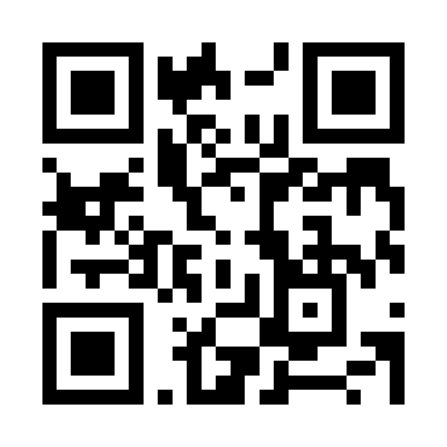
Contact us
Katy Bell, Senior Conservation Officer at Ulster Wildlife
T: 07816 065736
E: katy.bell@ulsterwildlife.org/barnowls@ulsterwildlife.org
Follow us on Twitter @BarnOwlsNI
FAQ's
I have seen a bird at night. Was it a barn owl?
If you saw the bird at night (not dawn or dusk) it was most likely an owl. However, in Northern Ireland, barn owls are often confused with long-eared owls. If you got a good look at the bird (in car headlights or with a torch for example) try comparing it to images online.
If you are still not sure or didn't see the bird clearly, did you hear it make a sound? Barn owls make wheezing, rasping screeches, while a long-eared owl has a more hooting, barking call - again an online search for bird calls may help you compare. If you are still unsure, think about the habitats that surrounded the area where you saw the bird; long-eared owls are more often associated with conifer trees or younger deciduous trees where they often nest in old nests from another species. Barn owls, on the other hand, are most often associated with derelict or quiet agricultural buildings and significantly more mature deciduous trees than long-eared owls.
There are three species of owl in Northern Ireland: barn owl, long-eared owl and short-eared owl. Barn owls and long-eared owls are resident all year round, while the short-eared owl is a winter visitor. Long-eared owls are more common and are associated with woodland. Sometimes the two can be confused if observed from underneath in the headlights of a car.
If you are still not sure, try keeping watch the next calm, clear moonlit night and you might get a fantastic view of the owl.
Can I put up a nest box in my garden for a barn owl?
It depends on your location really. Barn owls are associated with open countryside where they hunt, so a small suburban garden backing onto farmland might actually be a suitable location but generally, a small urban garden will not be appropriate. Have a read of the advisory sheets from the Barn Owl Trust before you decide and please bear in mind that they are large, heavy boxes that should not be camouflaged, so you may decide the effort is not worth the potential gain. Instead, why not ask any farmers in your acquaintance if they would host a box on your behalf.
I have a barn owl nest box but no barn owl. What can I do to encourage them?
The first thing you should consider to encourage barn owls is to provide them with suitable foraging habitats – they will initially be attracted to an area by food. See 'How can I help?' above for more detail.
An often overlooked step, particularly in a busy, productive farmyard, is to stop using or minimise the use of rodenticide. Rat poisons enter the food chain and build up in top predators like barn owls. Follow the Campaign for Responsible Rodenticide Use code if you must use rodenticide
Finally, ensure your box is still in good working order. If outdoors, it must be completely waterproof as barn owls will not use a damp box. If the box faces into the prevailing wind, rain is likely to be driven inside no matter how waterproof you have made the roof. Ensure the box is not camouflaged by overhanging branches or ivy; the entrance hole must be obvious to a passing owl. Check the inside has not been filled with sticks by other birds and remove if necessary. While there, check for evidence of barn owls visiting the box - whitewash, feathers, pellets.
How can I tell if my nest box or outbuilding is being used by a barn owl?
Barn owls are very elusive and predominantly nocturnal, but there are some telltale signs that could indicate the presence of a barn owl nest site:
Droppings
Barn owls droppings are mainly white and they dry to leave a white chalky substance very similar to whitewash.
Pellets
Barn owls regurgitate the undigested remains (mostly bones, teeth and fur) of their prey in the form of a dark-coloured pellet that is often the size of your thumb but can vary significantly.
Feathers
The presence of any barn owl feathers indicates that the site was probably visited between May and November which is usually when barns owls moult.
Noisy chicks and adults
Barn owl chicks make an unmistakable snoring sound when begging their parents for food. Listen out for this in the summer months during June/ July – it's as they get older that the sound really begins to travel. Adult females make similar calls earlier in the year, around January/February as she waits in the nest for the male to feed her prior to egg laying.
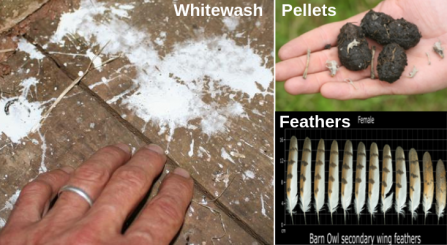
Signs of barn owl occupation
Snoring barn owls (https://youtu.be/fcaSy5cNrSo)
Snoring barn owls
I've found a pellet; is it from a barn owl?
Many birds produce pellets, including some of our garden birds, so you need to look closely to decide if it might be from a barn owl. Bird pellets do not smell and are not unpleasant to handle. Firstly think about where you found it. While it has the potential to be a barn owl pellet no matter where you found it outside, if you found it inside, for example in a farm building, then it is looking more likely, as most raptors don't venture inside buildings.
The next step is to look closely at the outside of the pellet. Most birds will ingest vegetation or seeds, so if you can see the pellet has seeds, leaves or anything of a vegetative nature then you can rule out barn owls. Barn owl pellets are dark and about the size of your thumb. Long-eared owl pellets are slightly smaller and more light grey in colour.
If all you can see is fur and perhaps bones sticking out then you may have a barn owl pellet, however other raptors do produce similar pellets including buzzards, ravens and of course long-eared owls. Generally, a long-eared owl pellet will also contain insect remains while a barn owl pellet will never have insect remains - have a look at images online to verify.
If you are keen, there is plenty of guidance online for dissecting pellets, why not have a go at identifying what mammals have been eaten?
Just a warning: fox scats can be mistaken for pellets - if it is long and thin and has a curl at the end, it is fox scat and is best left alone!
I think I've found a barn owl nest. Can I photograph or video it?
No, not without a licence from the Department of Agriculture, Environment and Rural Affairs. Barn owls are protected under Article 4 and Schedule A1 of the Wildlife (Northern Ireland) Order 1985 as amended by the Wildlife and Natural Environment Act (Northern Ireland) 2011. It is an offence to intentionally or recklessly damage, destroy or disturb the bird, the nest, the egg or the dependent young at any time.
Even under licence, great care must be taken as barn owls are extremely susceptible to disturbance at particular stages of breeding. Please do report any nest sites to Ulster Wildlife, detailing the evidence found - whitewash, feathers, pellets, sights and sounds of the adults/chicks - as this will enable barn owl conservation work to be focused in that specific area.
Ringing of barn owl chicks also requires a licence and must be carried out by an appropriately qualified bird ringer.
Read our annual barn owl survey reports
Every summer, thanks to help from our dedicated volunteers, we survey the countryside for sights and signs of barn owl nest sites. This data, in combination with sightings received from members of the public, is used to track changes in the distribution of barn owls and to help target our conservation efforts.

